Have you ever heard about the non-perishable foods? Do you know the brands of the most top-rated meals? What do beans, rice, nuts, crackers, chicken, and pantry all have in common? If you are eager to find out the answers to all these questions, read our article. Here you will learn about refrigeration, freezer options, harmful bacteria, and more about the food that can save your life in a survival situation.
What do non-perishable foods mean? It is a food that stays fresh for a long time without special conditions like cool temperature or low humidity. Different types of items rot in different ways. Dairy and eggs won’t be safe to eat after a few hours out of the refrigerator. But nuts and seeds won’t spoil for several months.
Notably, there are no pantry foods that are non-perishable at all. Each non-perishable food supply has its best by date, and some require refrigeration. There are many ways to keep it fresh for a long time. Advanced technologies can extend that period even by decades. But don’t expect too much. One day, germs will recycle any organic compound. They get energy from food as we do. The process of decomposing not only changes the appearance and smell of the product but can also make it dangerous to eat.
By the way, here’s our complete guide on how to plan your food storage. Feel free to diversify the shelf-life in your house. There is a great number of helpful concepts!
Best Non-Perishables For Hurricanes
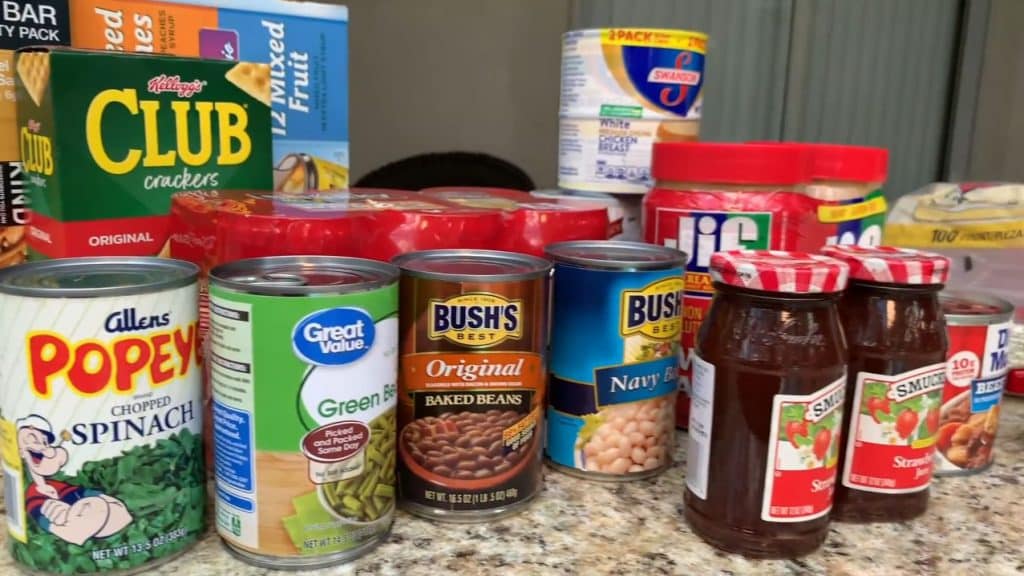
In any case, there are universal rules for making stocks for a dark day.
Rule number one. You need calories to survive effectively. Therefore, stock up on extra cans of spinach. It is a good source of protein and provides you with vitamins that will boost energy to recover from the disaster.
Second, the food you prepare should be ready to eat in water and electricity outages. Make sure that your supplies will not require cooking and remain delicious and convenient even when cold.
And the last one – your food should stay in a prepper pantry. Supplies that you have been collecting for a long time can disappear in an instant if you decide to store them in the wrong room. If you know that a flood is waiting for you, then move all the food as high as possible. If a hurricane is coming, then, on the contrary, take everything to the basement.
World Statistics
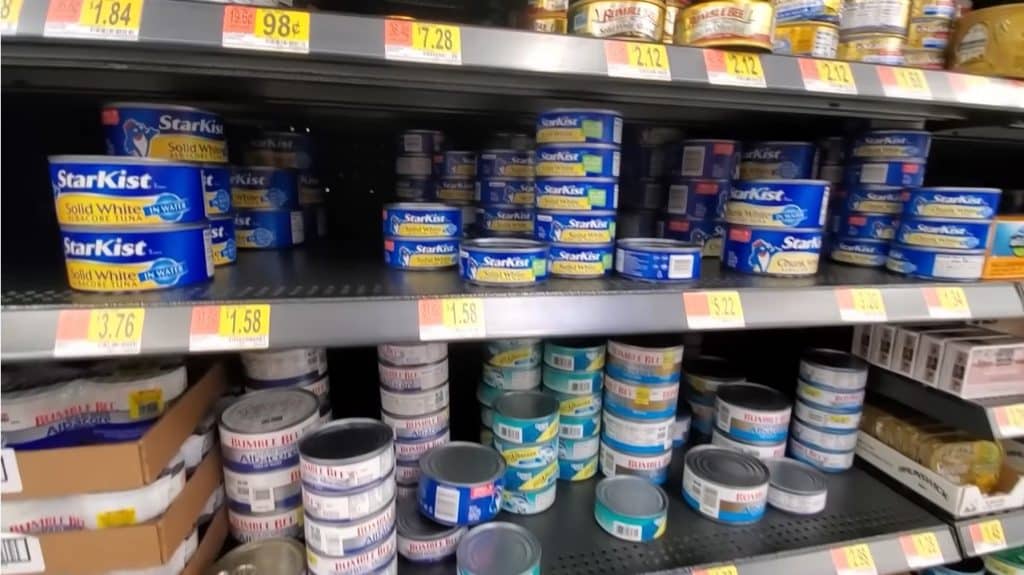
We need to tell some facts about food wasting. Nowadays, one of the greatest environmental problems is the overuse of food. Annually, more than one billion tons of food items are being wasted, from which it follows that the expense of the food we throw away is about $990 all around the world. But what is more frustrating is about 842 million people who suffer from lack of food, which is 12% of the globe’s population. On the other side, more fortunate people are wasting more than 210-250 lbs of perishable food per year, and these statistics are only for North America and Europe. Plant foods, including fruits and vegetables, have the highest rating of what is thrown away most often. So be more careful with what goes on your shopping list!
Well, let’s dive deeper into the subject of non-perishable foods. In this article, we will present you comprehensive information about non-perishable foods, as well as some life hacks and tips on how to preserve your survival foods best. To get full knowledge about this survival prep, read this article ’till the end.
And once again, make sure you know what supplies to store and how in the case of emergency.
Why People Need Non-Perishable Victuals
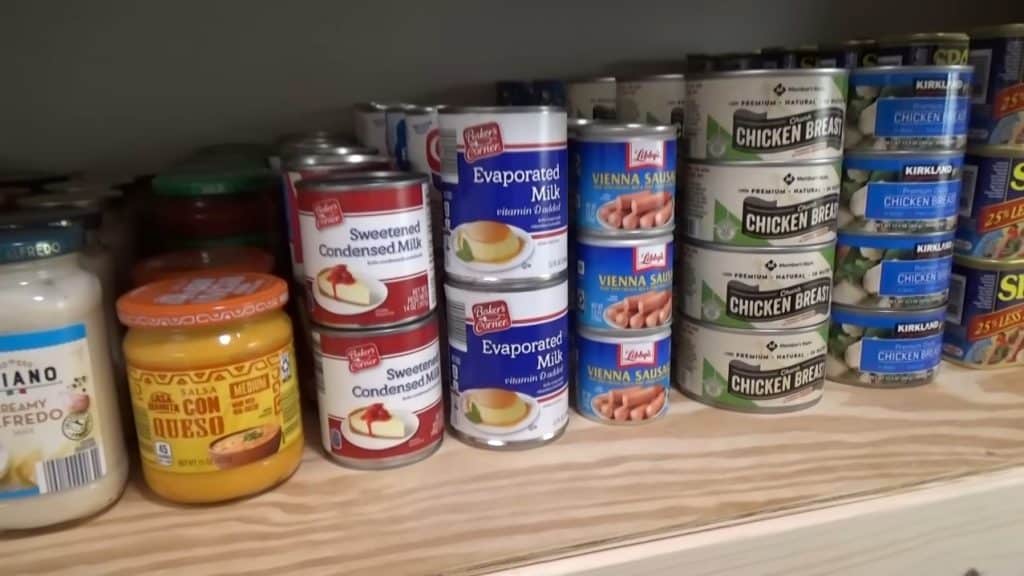
Non-Perishable Food For Long Journeys
Many people prefer to take non-perishables when going camping. This makes it possible to avoid carrying a portable refrigerator and dealing with melting ice. Instead of turning fresh meat into a pool of flesh and bacteria, you can take, for example, Beef Jerky or any other non-perishable meat. It can replace raw meat or tuna fish in our in-camp meal recipes.
Also, if you don’t want to build a fire outdoors or bring heavy equipment, you can bypass the cooking process at all. Non-perishable food items can make the hiking experience so much easier! In the evening, after a whole day on foot and setting up the camp, it sounds so appealing to chill rather than waste time next to the fire cooking. Learn how to make stevia syrup at home in our detailed guide. There are ways to use beacon grease as well, dive deep into details.
Important note: take non-perishable food items with high energy and biological value with you to replenish the expended energy and restore strength. And do not forget to leave all the perishable foods at home.
Non-Perishables For Disasters
Although difficulties do not happen so often, it is necessary to understand that the modern infrastructure is fragile and imperfect. In case you have to stay without electricity and power outage for more than a few days, it’s best to have some non-perishables prepared. They play an important part when you need to cook meals while surviving. You might want to have a survival food kit around.
Thanks to such supplies, you will be able to wait out the catastrophe and avoid starvation. This is exactly the reason why we have emergency food storage at our food storage at home.
Non-Perishables To Help Those In Need
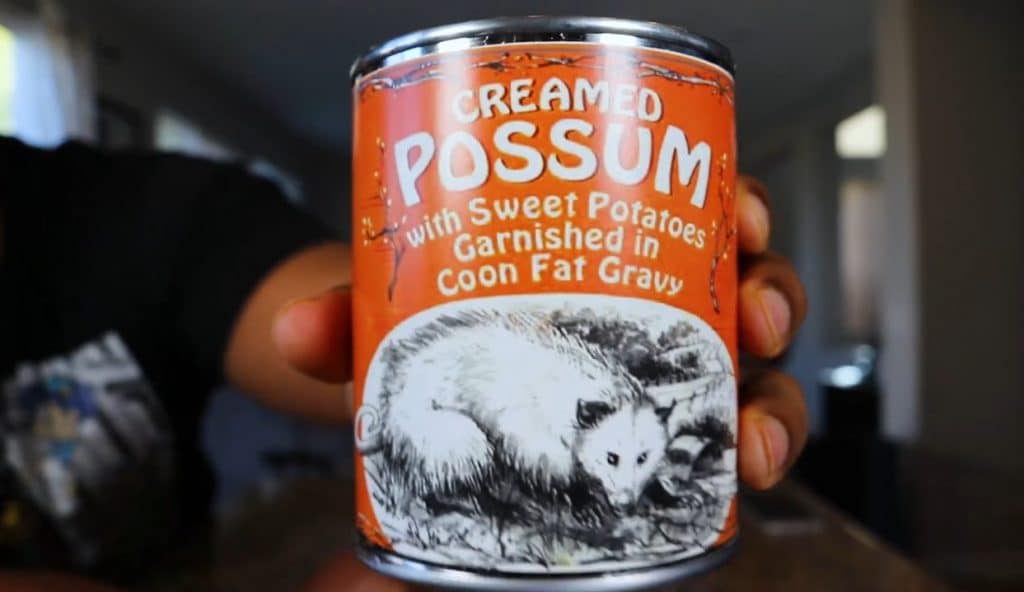
Foundations that help hungry and homeless people always request to provide non-perishable goods. It is difficult to imagine that someone would try to feed starving people with products like dairy or fresh fruits and vegetables.
For such purposes, food must be not only nutritious but additionally simple to transport and store. Items without packaging or in glass containers are not suitable.
But not all the food we give goes only to charity. It can also be a good present. Make some grocery store trips and choose delicious products and comfort food, something you would eat too. Otherwise, your recipient will have to deal with surströmming, or, for instance, “Creamed Possum in Coon Fat Gravy Garnished with Sweet Potatoes.” Be kind to people in need. It’s important not only for them to get a nice spoonful of canned food, but for you too, to make your karma level rise.
Examples Of Non-Perishable Foods
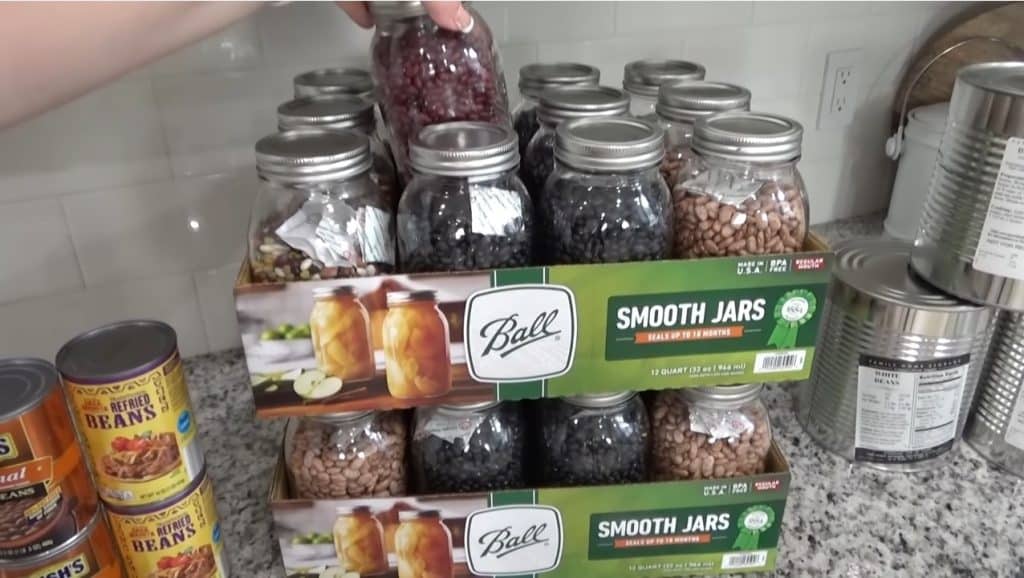
- Bottled water and juice boxes
- Beef Jerky
- Canned tuna, canned meats
- Dehydrated pasta (ramen noodles, spaghetti, etc.)
- Trail Mix (especially the nuts)
- Drained brown rice and beans (check out our plan on how to store rice in the pantry)
- Canned foods (greens, beans, fruit canned, cooked meals, canned options)
- Freeze-dried supply (read our grocery list of non-perishable freeze-dried meal possibilities)
- Pemmican – (a step-by-step recipe of pemmican, as Native Americans cooked it)
- Oatmeal or cereal, granola bars, grains
- Peanut, almond, or nut butter, vegetable or olive oil
- Nuts seeds
- Dry spices, onion powder
- Apple sauce and syrups
- Coffee beans and tea
- Pancake mix, flour, sugar, powdered milk
- Baby-formula food
- Crackers (check out our cool hardtack recipe)
- MRE’s (MRE survival items research)
- Dried fruit (information about dehydrated snack choices)
Salutary Non-Perishable Goods Options
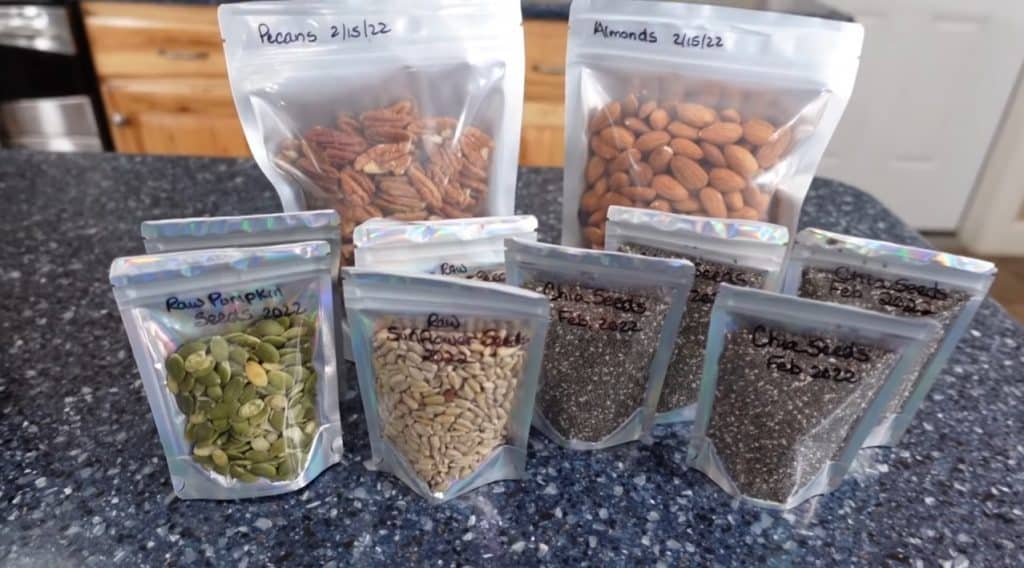
Nuts and canned beans are not only a good source of protein, but they can additionally provide you with the whole of vital vitamins and amino acids.
But you should desist from meals that are ready to eat (MRE meals). Fast carbs can make you gain a few pounds if you don’t work out enough. Furthermore, don’t go easy on canned soups. They contain high amounts of salt and sodium, which can make you feel thirsty, and in some cases, even develop some heart disease issues. This is not what you want with a limited amount of bottled water.
So, you need to think about your stocks’ long shelf life and how they will affect you.
To make your shopping list more varied when you start to prepare for a disaster or something like that, please, read our cost-free family-oriented plan.
Non-Perishable Food Suppliers
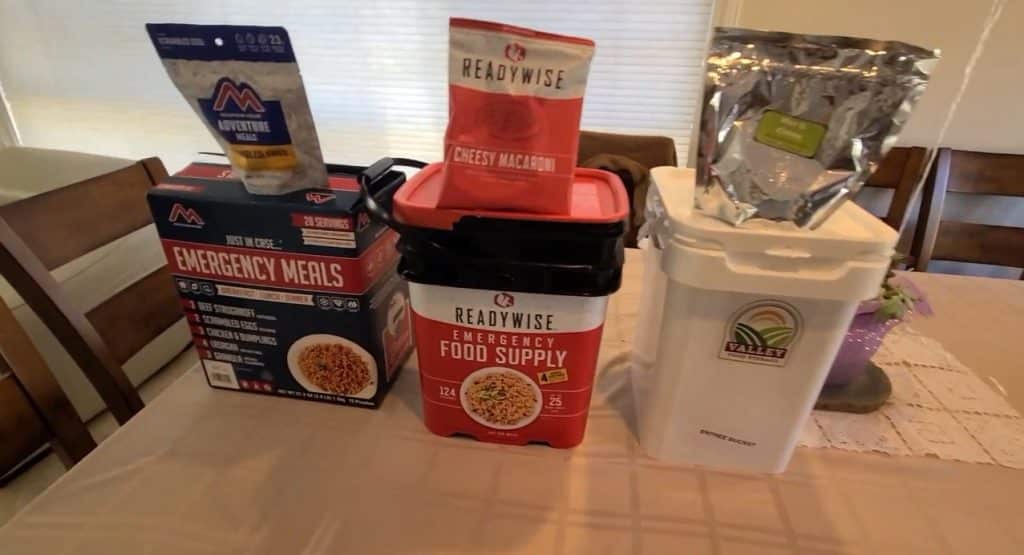
These items can be found online, of course. Here is a list of brands to start with:
- Valley Food Storage meals review.
- Mountain House store cooking examination.
- Legacy Emergency Food shop article.
Even though each store from the list has its pros and cons, none of them lets preppers down in a difficult hour, that’s for sure. But there are certainly leaders among many other platforms. You need first to get to know the industry leaders and then choose the flawless one for you.
How To Make Non-Perishable Foods With Regular Products

Bacteria, despite their small size, can be completely autonomous organisms. That is, provide themselves with everything necessary for life. Bacteria are robust and adapted to various living conditions. To survive the apocalypse, bacteria need, like humans, access to oxygen, water, and food. Plus, they prefer mild warmth.
Now that we know what causes bacteria to multiply, our task is to prevent them from doing so. But most importantly, we cannot exclude food because we are defending. Let’s look at possibilities that will help us reduce bacteria’s growth in our diet supplies.
Heat Regulation
As we know, refrigerators and freezers reduce bacteria’s ability to grow and prevent food spoilage.
That is, at low temperatures, bacteria die, and at moderately low temperatures, they are still able to survive, but they will no longer have the opportunity to multiply.
However, you can do without electricity. Cellars were used in the old days. So don’t be afraid to store your food in a basement or underground cellar where temperatures are much lower than room temperature.
Suffocation
Oxygen, like for every living creature, is also vital for bacteria. Therefore, in addition to cold temperatures, the most manageable way to protect the goods is vacuum packaging (sealing) and mylar bags. With these packaging methods, you can store food so that it wouldn’t have access to oxygen.
Preserve The Foods
The most common thing in food preservation is canning, especially when you have greens collected from your garden.
Proper canning of vegetables and fruit options preserves a maximum of vitamins and minerals in them. And the methods of canning using sugar, salt, heating, or cooling do not allow microorganisms to expand in products. By the way, canned fruit is sweeter, but some preppers prefer dried fruits instead.
Thus, you will save self-grown items and protect them from various microbes because every can and jar is hermetically sealed. But don’t forget to buy a can opener. Otherwise, you will need to break your provision.
Moisture Exclusion
As you might have guessed, removing most of the moisture from reserves will not spoil them. But there are some distinctions between freeze-dried and dehydrated foods as they have different moisture levels. Below are the two main ways to eliminate excess fluid from meals.
1. Dehydration
A constant blowing of warm air allows removing maximum liquid from the goods. By eliminating moisture, bacteria’s growth is inhibited, so the foods’ shelf life is increased many times. The stocks dried in this way receive a very high concentration of flavor while not losing the composition of vitamins and minerals.
However, dehydration still does not preserve your veggies and other goods as well as freeze-drying. Consequently, let’s move on to the next method of excluding the moisture.
2. Freeze-Drying
Freeze-drying is based on the process of sublimation: in a vacuum, water passes from a solid-state directly to vapor, the ice evaporates. Eliminating the moisture in this way creates only a slight change in the internal structure of a product. Dehydrated cells form a spongy structure with cavities that quickly absorb moisture when the product is immersed in water. Thus, by removing all excess moisture from foods, you reduce the risk of bacterial growth, which we aim for in this part of the article.
Currently, this method of drying meals is the most advanced, but at the same time, the most expensive. It is possible to build such a dryer with your own hands, but it is very energy-consuming and takes a lot of time.
Therefore, we recommend you to purchase a ready-made Harvest Right. But it will work for you only if you are willing to invest a certain amount of money in it, or you have someone ready to share the losses and subsequent use. Or maybe you desire to start selling freeze-dried items later. Either way, watch the video below to see one of the freeze-dryer choices:
For those who are not enthusiastic about spending a huge amount of money on a home freeze-dryer, we recommend purchasing ready-made non-perishable stocks from the online stores that we listed earlier (Valley Food Storage, Mountain House, or Legacy Emergency Foods) or from the local grocery stores.
That is, for this sum of money, you can add to your shopping list ready-made items that you do not have to pack yourself and spend time cooking.
3. Dehydration or Freeze-Drying
To start with, let’s figure out what is better, a refrigerator or a freezer. The refrigeration slows down the growth of bacteria while the freezing prevents them from growing entirely. According to the principle of work, a freeze-dryer is more like a freezer (well, that was obvious), while a dehydrator is more like a refrigeration system.
However, freeze-drying is better because it does not require or run on electricity consistently. To achieve the longer shelf life of freeze-dried meal alternatives to the supreme, it is still more beneficial to practice freeze-drying.
Nevertheless, if you consider what we said earlier (that freeze-dryer is very costly), you can do the dehydration process yourself. And thus, start cooking products today as this requires a minimum amount of kitchen utensils.
To dehydrate meals right now at home, you will need to have such appliances in the kitchen as:
- In the oven, slightly open the door and set a low heat;
- Then use an obtained dehydrator machine or a natural one (sun and wind).
As you can see, everything is extremely manageable and affordable!
“How To Preserve Foods” Book

This book’s title is “The Lost Ways” it has a list of step-by-step instructions that will be beneficial before you start preparing for survival. Please read what this book contains, we are sure it will be serviceable. Here are a couple of excerpts from it:
- Pemmican recipes (non-perishable option of cooking meats from Indians)
- Building a self-feeding campfire (which is cool because, during survival, all means are immeasurable)
Frequently Asked Questions – FAQ
What is considered a non-perishable meal item?
Non-perishables are goods that can be stored without special temperature conditions for a period of one month or more. Even though such items do not need freezing, storage conditions should comply so that their quality is not compromised. The details of storage are usually written on the package, as a last resort you can look out for it on the Internet.
How long does non-perishables last?
Such goods can be stocked for more than a month. The main thing is to comply with all storage conditions, as we said before. It is important to read the labeling on the product carefully and not neglect the quality of the packaging. The packaging must not be opened, have scratches and dirt. Sometimes, it happens that sellers repackage an item, so it’s always worth examining it for mold or other kinds of damage.
Is peanut butter non-perishable?
Peanut butter is an inexpensive source of healthy protein, fat, and fiber and is low in carbs. This is a great way to make your snacks more nutritious. Just be sure to choose natural brands of peanut butter that contain no added sugar content. Once opened, peanut butter has a shelf life of about a year.
What should I stockpile?
In addition to everything that we said above, it is important to remember that it is necessary to control the number of carbohydrates consumed and other calorie parameters. The number of PFCs that you need or that you can compensate for depends on many factors. Try to include protein and fat in every meal or snack.
Here are some pantry staples that we probably missed (and didn’t miss, want you to remember) in our previous list of non-perishable food: baby food (if suitable), almond butter, canned food with low sodium (canned vegetables, canned fruit, canned tuna), dried fruits, trail mix supply, green beans canned too, powdered milk, grains and granola bars, pre-made dehydrated pasta, and dried meats.
Plus, you can read about what items are best to stock up in our article above. Everything there is disassembled and described in detail. Good luck!


